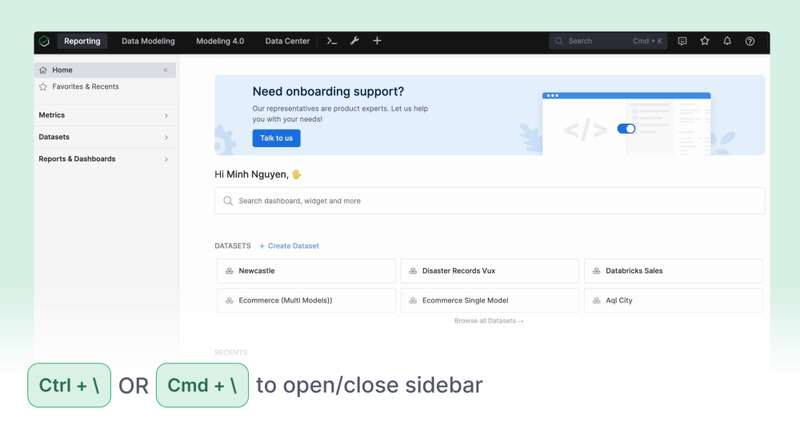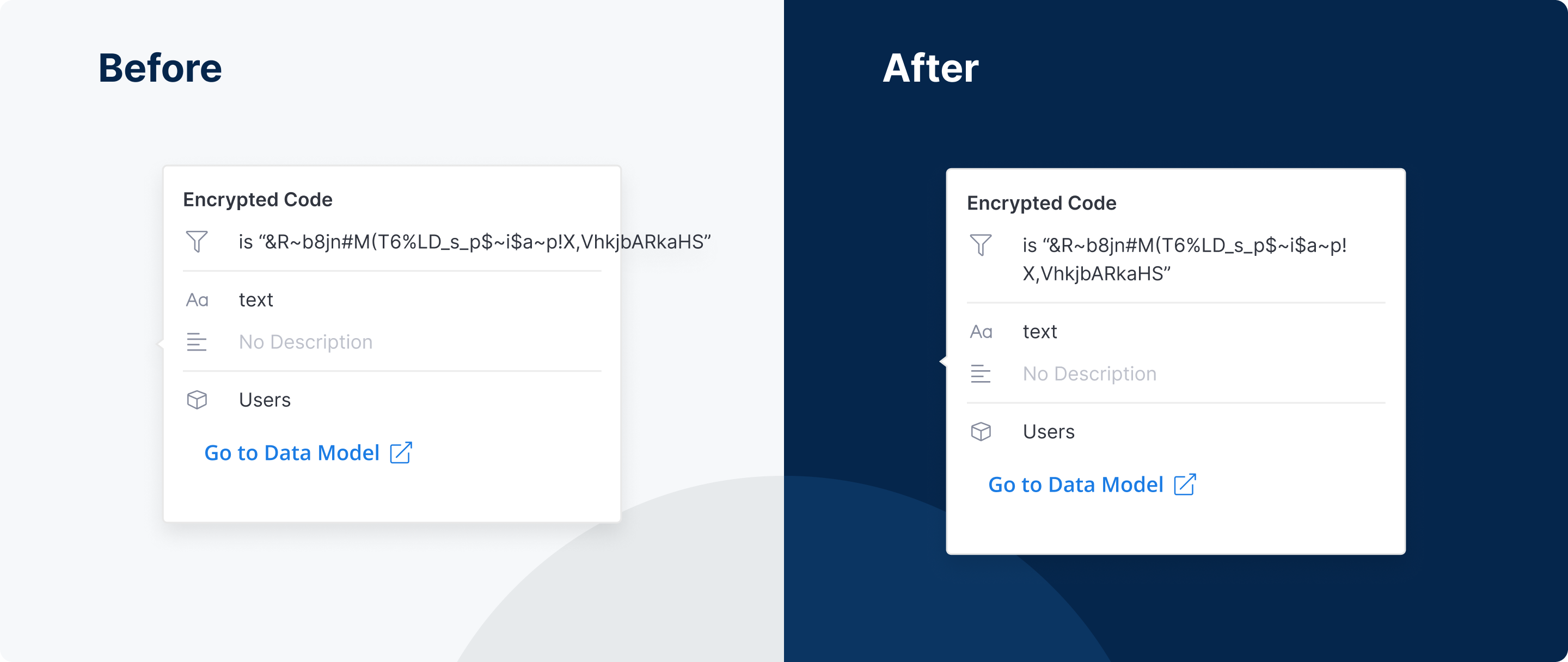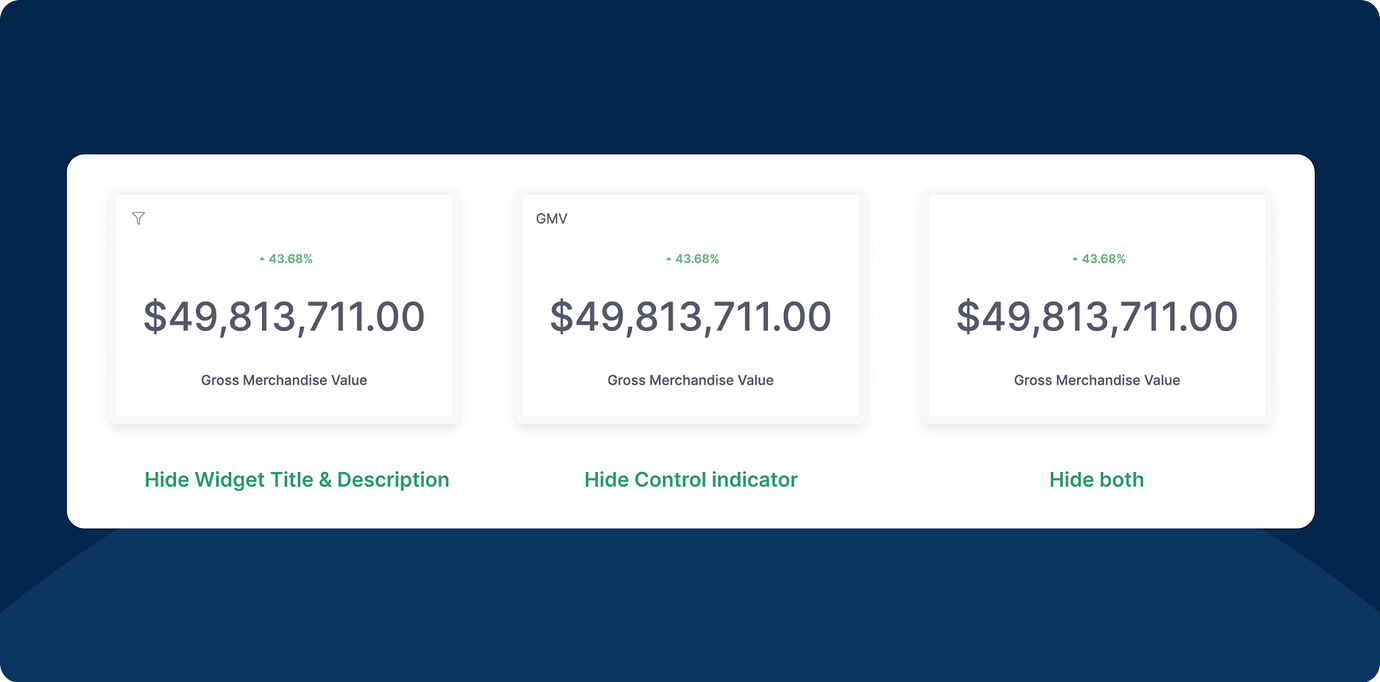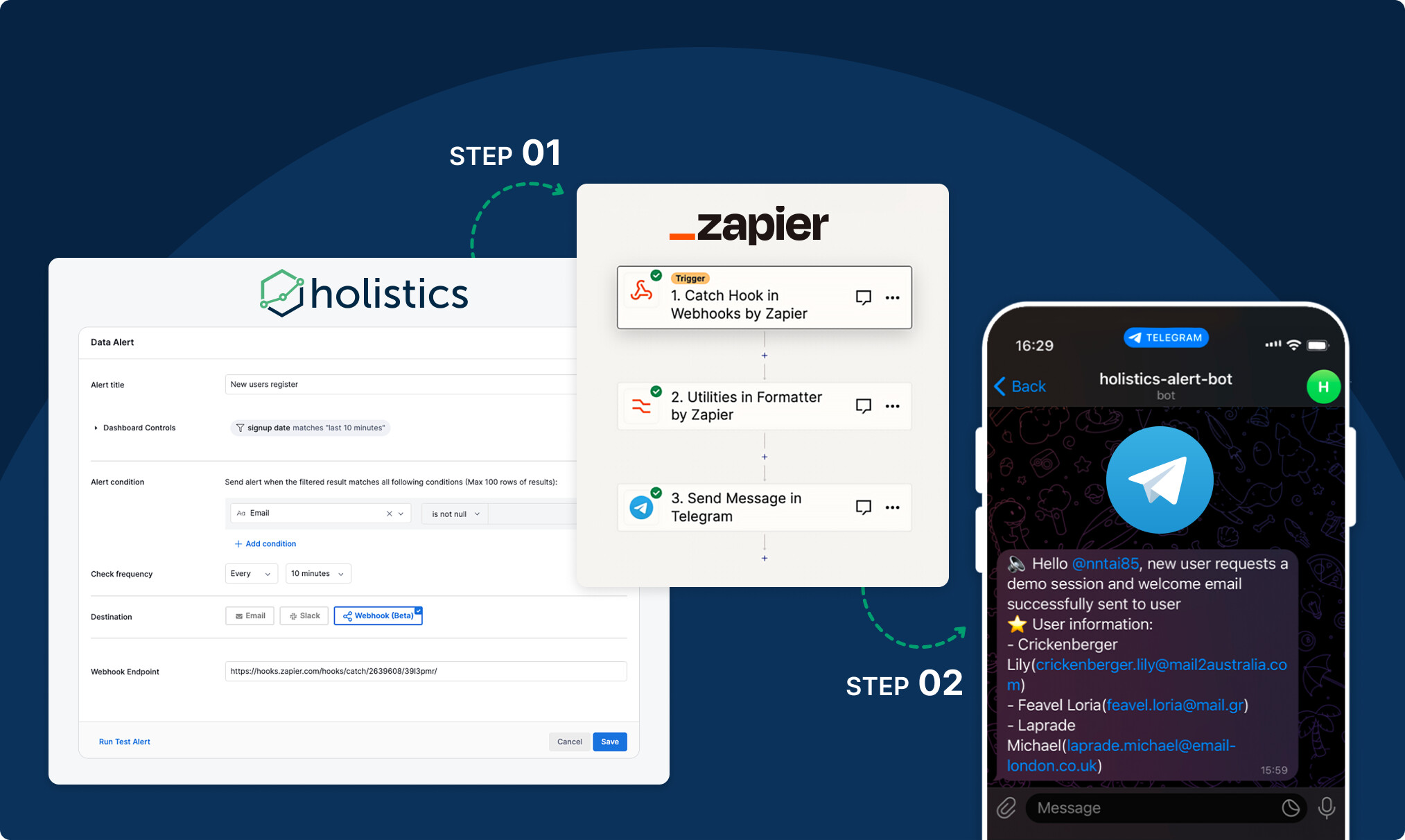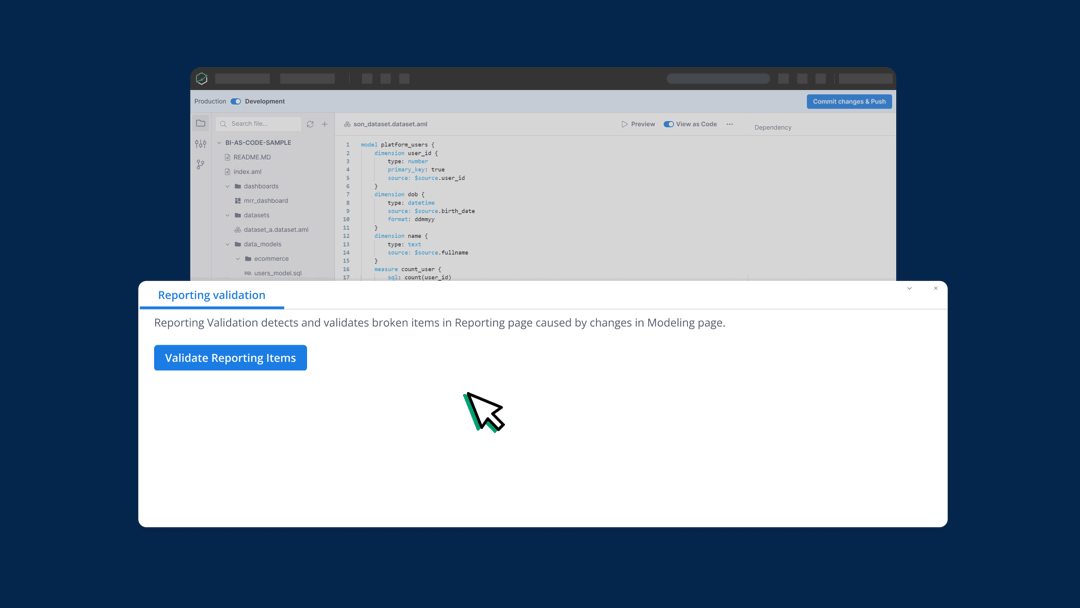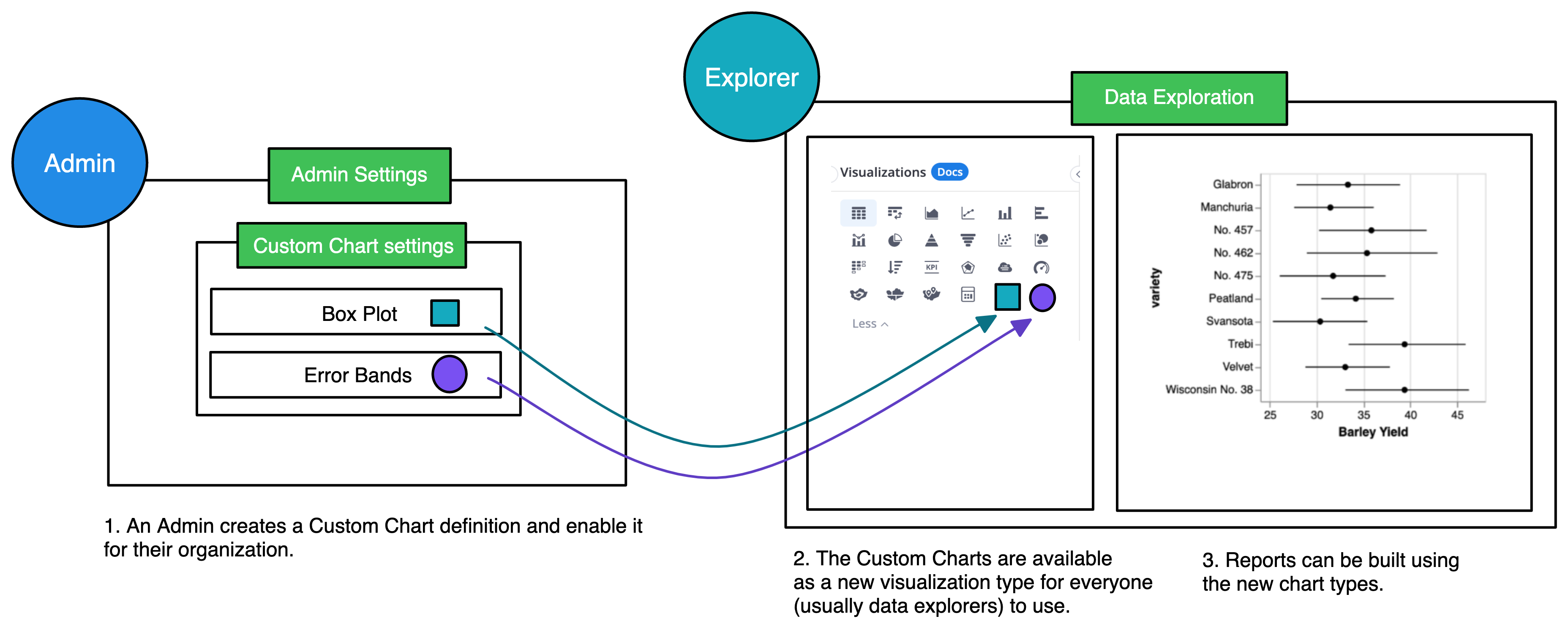In October, we’re making some great updates to our Dashboard As Code, making it easier to build reports using code and have fine-grained control over viz, layout, content, and reporting architecture.
We started testing this internally this month and can't wait to share with you a short demo - but before we get to it, here’s a peek at how here’s a peek at how some of our data team has been using it:
- Triet Le (Analytics Engineer): “I can code the entire dashboard into a narrative that people want to read and engage with.”
- Huong Le (Data Analyst): “It becomes a lot easier to reuse a dashboard. I just need to clone it, change filters, change dimensions, and re-format it on the fly.”
With this feature, analysts will soon be able to adopt software best practices in your dashboard development. Through codification, you can have full control over the content and design of your dashboards, easily revert changes, make bulk updates, and have customized and reusable visualizations everywhere.
If you’re as excited as we are, stay tuned. We’re running as fast as we can to get this on your hands! :) Without further ado, here’s the new demo.
How do you see this feature being useful to your team? If you have any feedback or suggestions for us, please share them here. We’re all ears.
P/s: We had a lot of fun testing this feature. Our team was even able to whip up a Pokedex dashboard in just a few minutes.






